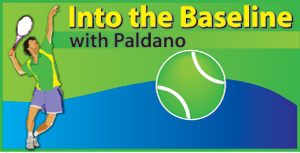Tennis development strategy
View(s):One man show of player development J.P.M. Grenier in the lower courts of SLTA in the 1950 through to 1960s, to modern day SLTA scenario of managerial style mass tennis academies with cheering squads even for a first round match, is the shape of teaching progression in the country. Our tennis standard now rest more with that of school tennis standard. It is insufficient to participate in world junior two of three standard events or in the first three tiers of men’s Davis Cup.
 ITF qualifies tennis coaches. With their attachment to equipment producing segments for sponsorship, they want more to play tennis than to improve tennis. Even today, we faithfully remain affiliated to ITF since 1915. Globally, ITF role and influence is minimised by ATP and WTA. The professionals from South Africa, Europe and USA went into make the original ATP in the 60s. This breakaway by the professionals is from the insistence of amateurism by ITF.
ITF qualifies tennis coaches. With their attachment to equipment producing segments for sponsorship, they want more to play tennis than to improve tennis. Even today, we faithfully remain affiliated to ITF since 1915. Globally, ITF role and influence is minimised by ATP and WTA. The professionals from South Africa, Europe and USA went into make the original ATP in the 60s. This breakaway by the professionals is from the insistence of amateurism by ITF.
Changes in tennis
In the last 50 years, composite material replaced the ‘fine European willow’ to make racquets. Composite material construction permits a 10-year-old to hit the ball as hard as an adult player does. This made the game faster. With this, we experienced the first disadvantage. On an average, we are not tall or stronger genetically as the Nordic builds.
The second disadvantage came from the playing surface. Synthetic surfaces with asphalt base made the ball bounce uniform, higher and fast. Power displace artistry. Player’s body frame measurements had the advantage. Asiatic forte is in the artistic hands and touch in stroke making. These are visually pleasing and inviting. One player did sustain this beauty even with synthetic racquets and surface. Switzerland’s Roger Federer, a rare occurrence.
Development demands
Skills take time acquire, in fact it is a very long road. All would be players and parents should accept what this is and know what it entails. Taking early start is good. A five-year-old today are with a ‘toy brand name racket’. There is a chance of the child becoming a good tennis player at 15. Provided they pick up height, speed, suppleness, sighting, strength mental toughness and training disciplines. Often parents isolate talented and send them to six different maestros in three continents. Not all make it.
There is another way and it is much more interesting to the child. Have you heard the expression of being an ‘all-rounder’?
General and specific aspects
General development is the guide, for a child up to 13 to 15 years of age. [Related to biological age factor] Specifics before this age can cause mental, physical and performing stresses. [Get someone to explain this]. In any ‘stress’ related situation a child does not learn or gain but flee. Children must not get challenges they cannot handle. For the parent patience is the catchword in development. Never give more than what they can handle.
Tennis is equipment handling skill sport demanding very highly developed eye/arm coordination for ball contact. Its partner sport are hockey, squash and table tennis. [Two of our past players were TT players. Vajira Premaratne and late Suresh Melvani. P.S. Kumara was an all-rounder and Ranjan Wattegedera was a badminton player]. Here is the lead from our own soil. Another very salient factor, kids learn better by doing. What it means is that they do not need a coach at very early stages of sports but good company and opportunity to ‘play’. Review development regularly. Academies do not work with planned syllabus. A defect very difficult to correct in Sri Lanka.
Facilities issue
Time and money pressure has changed the scenario of sports in Sri Lanka. As far as I know, in Colombo, only two sports facilities are owned operated by the club in it. Others are on municipal property. Of recent, they are paying very big amounts to retain it annually. We are bound to see stadiums and the facilities that will be, like a cinema hall, for imported events and remain as ghost stadiums between events. One can see them in many parts of Europe. Electronic media is taking the event to homes. Spectators not needed at the stadium. Not many know this is happening.
Miami Open 2023
This is an ATP/WTA event meant to be a partner event to Indian Well. It did not get the best blessing of weather. Cyclones ripped through neighbouring states of these venues. In women’s event Petra Kivitova with 17 years of WTA, after a brutal physical attack bounced back to win the Miami Open. Before this, she reached quarter-final many times.
The top trio of men to replace Federer, Nadal and Djokovic has evolved. Medvedev, Carlos Grafia and Sinner are names to remember. The last few events show how thin the difference is between them. They are stroke makers. Medvedev’s ability to outlast opponents gave him the Miami title.
–George Paldano, European and Asian competition player; Coach German Tennis Federation; National coach Brunei and Sri Lanka; Davis Cup, Federation Cup coach, coached ATP, WTA and ITF ranked players in Europe and Asia; WhatsApp +94775448880–


